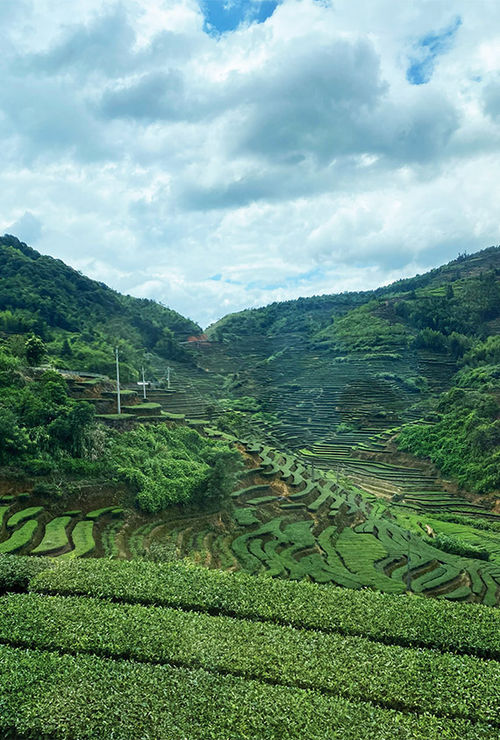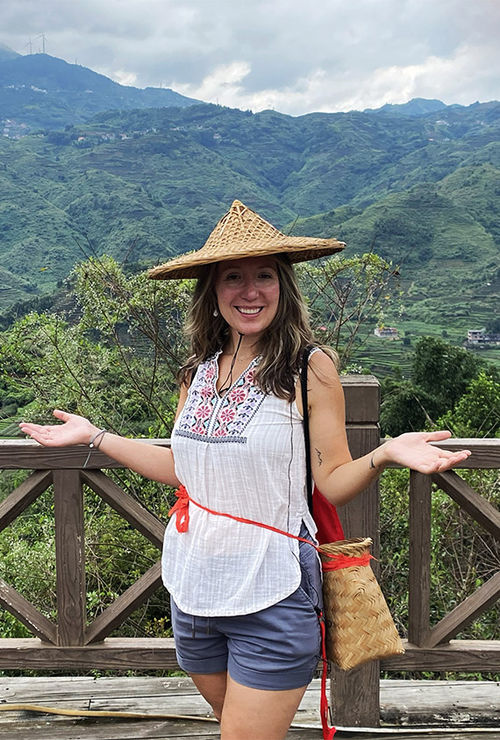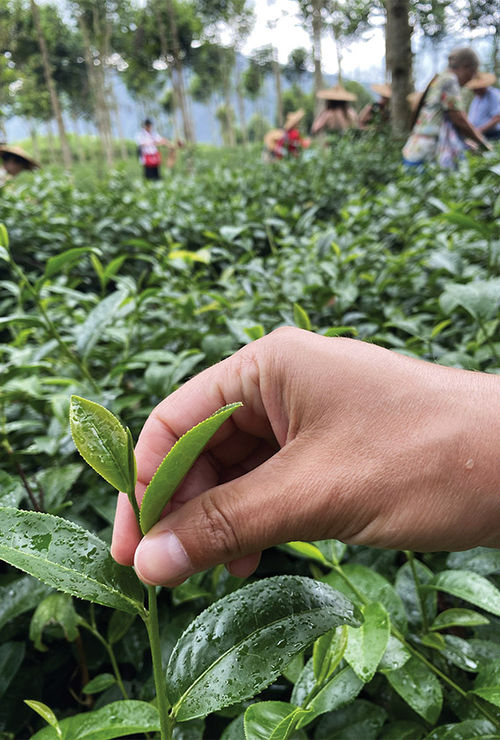Drinking green tea has been part of my ritual most mornings for the past 20 years, but I had never given much thought to how that hot beverage had gotten from a plant to my cup.
That changed, though, during an eye-opening shore excursion, a break from my recent cruise aboard the Viking Yi Dun, the cruise line's inaugural coastal China voyage for English speakers.
China has been making tea for thousands of years, and here I was, standing in the birthplace of Tieguanyin tea, a type of oolong tea, and I was about to pick it myself.
My fellow passengers and I had spent the past few days immersing ourselves in Chinese culture and rituals during this 10-day cruise from Shanghai to Shenzhen in September. (This product was new for Viking, following its launch of sailings in the East and South China Seas for domestic travelers three years ago.)
Many of us watched with interest as the line offered a traditional tea ceremony onboard. Accompanied by the dulcet tones of traditional Chinese guqin string music, a Chinese woman sat at a table in front of us like she was on a stage. She slowly and systematically warmed tiny cups, brewed and discarded some of the tea, then filled up the tiny vessels and offered them to guests. The ceremony was like a performance, with deliberate actions done with care.

Tea terraces in the Fujian. Photo Credit: Andrea Zelinski
Now, with the Viking Yi Dun calling at Xiamen, we boarded the charter bus that whisked a group of us into the mountains of Fujian province. The hills were lined with rows of tea trees that reminded me of grape vineyards in Italy.
Along the way to our destination in An'xi County, our English-speaking Chinese guide told us how Tieguanyin tea is foraged and explained An'xi Tieguanyin tea culture. This type of tea, oolong, is somewhere between green and black on the tea spectrum, our guide told us. Depending on how oxidized it is, the tea can taste more like one or the other.
As I stepped off the bus to begin the tour, I breathed in the scent; it was earthy and familiar, and tea was on my mind. Around the corner was an overlook, where I could see the mountains ribbed with tea trees.
Next, we were off to a family-style lunch that included tea-scented baked longdan fish; braised brisket and pig's feet tendons; and an entire rooster, along with noodles, vegetables and fried pumpkin cakes, which were my favorite.

The writer wearing a bamboo hat, which came in handy once it started raining. Photo Credit: Courtesy of Andrea Zelinski
Harvest time
After lunch, the staff outfitted us with bamboo hats and tea baskets and then led us downhill on a paved walkway to a small field of tea trees to harvest.
As we combed through the bushy trees, our host at the facility (through our guide) instructed us to look for two large leaves together with a smaller, baby leaf in the middle and pick that group of three.
We went to work, foraging for the proper trios to pluck. I quickly began adding leaves to my basket, enjoying their smell, which reminded me of the comfort I feel sipping my morning tea.
After a while, mosquitos began to bite and rain began to fall, so we retreated back up the hill to find shelter under a gazebo. As guests rested and caught their breath from the wet walk, our host and guide shared more details about the tea.
We then headed indoors for a demonstration of how the leaves are processed. Workers first let the leaves dry, a task they speed up by tossing the leaves in large baskets hanging from the ceiling. We were all offered a chance to try this.
The leaves are then fried, curled and rolled.

The key to picking tea leaves is to pick two large pieces that have a "baby" leaf in the middle, our guide said. Photo Credit: Andrea Zelinski
Tea time
After the tour, we sat in the tearoom and were treated to a traditional tea ceremony. About a dozen of us sat around a low-slung table and watched our Chinese hosts follow the same ceremonial process we learned on the ship. We sipped our tea in small cups, sampling caffeinated and decaffeinated tea; many purchased some tea to take home -- me included; I bought some for myself and some smaller packs for family, friends and neighbors.
I asked our guide how common these ceremonies are. Judging by his answer, it didn't sound to me like they are reserved for special occasions: he performs the ceremony every day, in the morning while watching NBA broadcasts from the U.S., he told me.
I guess we all have our rituals.